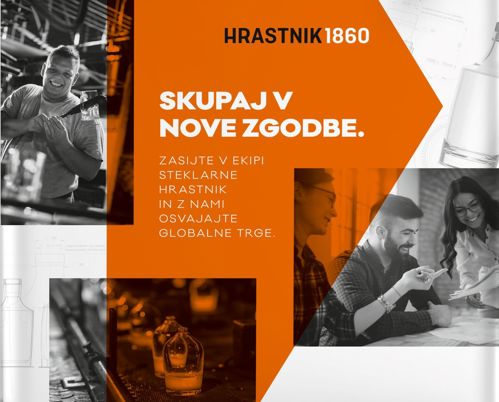- Software:
- Service:
- Client:Steklarna Hrastnik
- Date:03.12.2019
Strategic Employer Branding for Steklarna Hrastnik
Steklarna Hrastnik, a leader in premium glass bottle manufacturing, faced a critical challenge in transforming from a traditional manufacturing firm to a high-tech Industry 4.0 enterprise. This shift required attracting highly skilled engineers, a demographic traditionally disinterested in the glass manufacturing sector. To address this, Steklarna Hrastnik embarked on a strategic employer branding initiative aimed at repositioning itself as an employer of choice.
Steklarna Hrastnik embarked on a comprehensive initiative to reposition itself as an employer of choice, focusing not only on revamping its visual identity but also on enhancing the experience of all stakeholders, including employees, youth, and job seekers, at every touchpoint with the company.
The project unfolded in four key stages:
- situation analysis,
- strategy development,
- implementation planning,
- and execution.
Understanding the Current Perception
The first step involved a thorough assessment of Steklarna Hrastnik's existing reputation as an employer among three critical groups: current employees, leadership, and potential candidates.
This was achieved through targeted focus groups and surveys, providing valuable insights that shaped the Employer Value Proposition (EVP).
The EVP was grounded in the company's strategic objectives, core values, and unique attributes that differentiate Steklarna Hrastnik in a competitive labor market.
Crafting a Comprehensive Employer Branding Strategy
Building on the EVP, a detailed employer branding strategy was crafted, complete with an implementation plan and a refreshed visual identity.
The communication strategy was designed to target key audiences through carefully selected channels and messages, guiding candidates through the recruitment funnel from attraction to onboarding.

Overhauling the Onboarding Process
Recognizing the critical importance of first impressions, special attention was given to overhauling the onboarding process. Feedback from focus groups with new employees and surveys with department heads highlighted areas for improvement.
The onboarding process was extended from one week to a comprehensive three-month program, featuring mentorship, internal coaching, and departmental rotation, followed by nine months of ongoing support and monitoring.
Employee satisfaction with the onboarding and development process is regularly tracked through personal meetings and surveys, ensuring continuous improvement.
